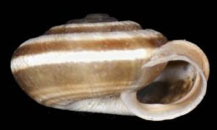| Zarateana arganica | |
|---|---|
 | |
| Apertural view of the shell of Zarateana arganica | |
| Scientific classification | |
| Kingdom: | Animalia |
| Phylum: | Mollusca |
| Class: | Gastropoda |
| Order: | Stylommatophora |
| Family: | Geomitridae |
| Genus: | Zarateana |
| Species: | Z. arganica |
| Binomial name | |
| Zarateana arganica | |
| Synonyms | |
| |
Zarateana arganica is a species of air-breathing land snail, a terrestrial pulmonate gastropod mollusk in the family Geomitridae. [3]


